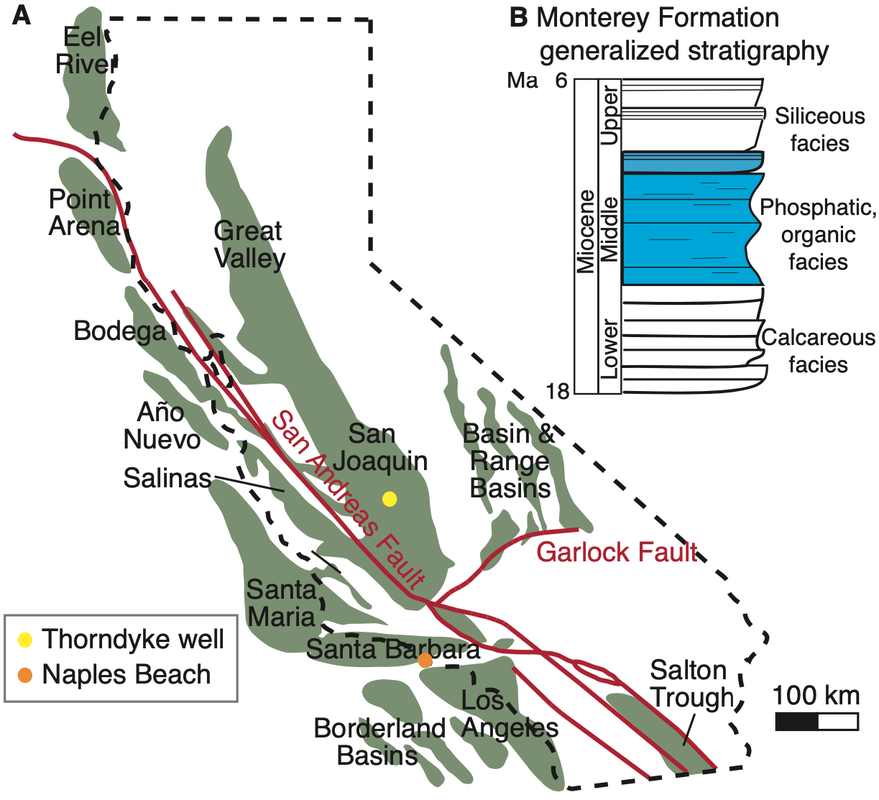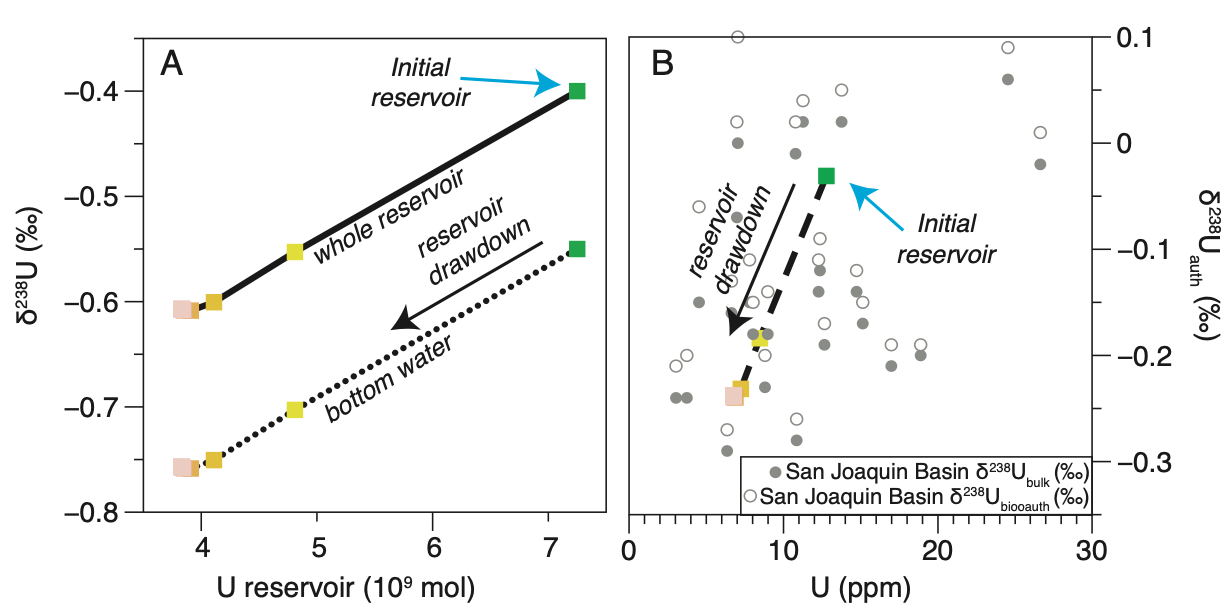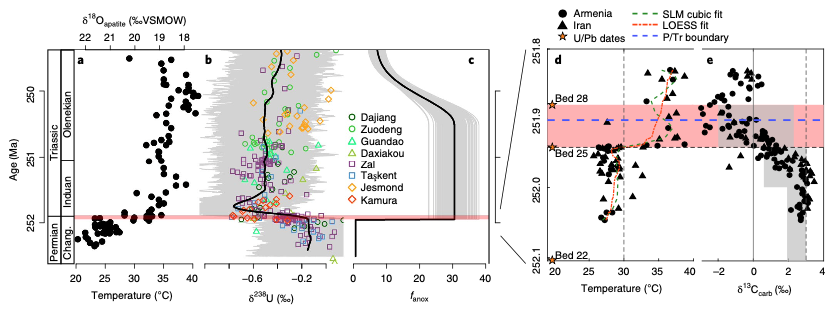|
Congrats to PhD student Fai Chanchai for successfully completing her first major milestone in her graduate degree. We're so proud of you!
0 Comments
Pleased to share a new paper on the controls on U isotope variability in black shales, using a Miocene case study. The Monterey Formation is inherently interesting as its very phosphatic and is also the source rock for the CA petroleum industry. It also was deposited in a number of unique basins (bottom left) where U isotope behavior varied significantly. It's a complicated story, but we use U isotopes and U concentrations to try to understand the major controls (apatite concentration, basin hydrography, productivity) that drive the range in isotope values that we observe. We also show that in these Miocene basins, the isotope offset in anoxic--but not euxinic--basins were just as large as in euxinic basins, which could indicate that the modern budget is not representative of ancient ones.
This work was done as a postdoc at UCR with my mentor Tim Lyons, and I am glad to have had the opportunity to work with many new geoscientists. Thanks also to the Agouron Institute, NASA, and ACS PRF for funding this work! A free PDF can be accessed here until the first week of January. Very excited about this new paper out in Nature Geoscience titled End-Permian marine extinction due to temperature-driven nutrient recycling and euxinia! We use constraints of global redox conditions (from uranium isotopes) and the spatial variability of redox (from many different types of proxies) to compare with cGENIE results. With this data-model coupling, we argue that warmer temperatures in the Early Triassic led to higher microbial respiration rates in the ocean (i.e., a stronger biological pump), which would have resulted in high amounts of nutrient recycling in the water column, sustaining anoxic conditions and poisonous hydrogen sulfide gas! Thanks, Dom, for leading this very fun project.
|
Archives
May 2023
|


